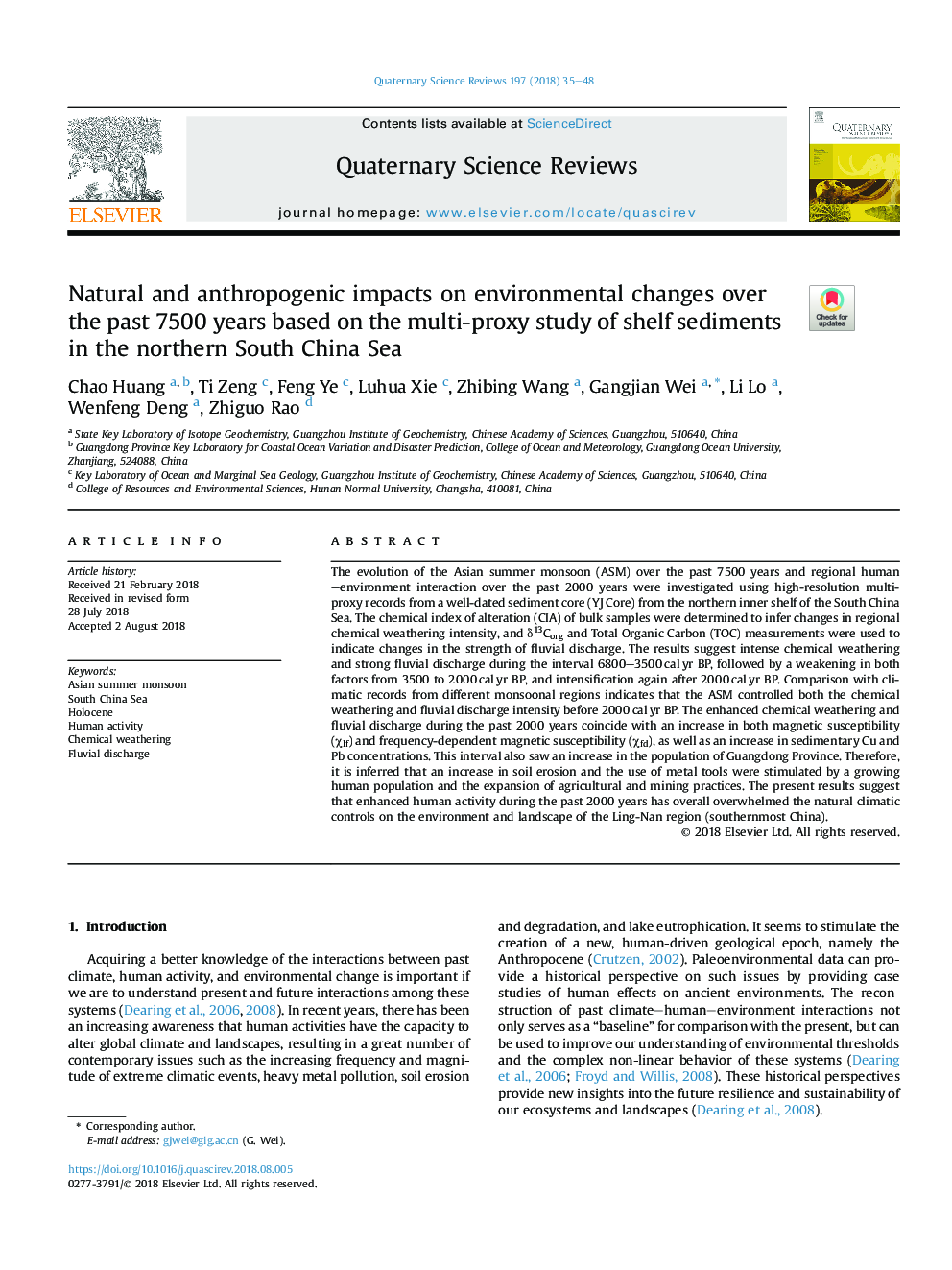| Article ID | Journal | Published Year | Pages | File Type |
|---|---|---|---|---|
| 10120978 | Quaternary Science Reviews | 2018 | 14 Pages |
Abstract
The evolution of the Asian summer monsoon (ASM) over the past 7500 years and regional human-environment interaction over the past 2000 years were investigated using high-resolution multi-proxy records from a well-dated sediment core (YJ Core) from the northern inner shelf of the South China Sea. The chemical index of alteration (CIA) of bulk samples were determined to infer changes in regional chemical weathering intensity, and δ13Corg and Total Organic Carbon (TOC) measurements were used to indicate changes in the strength of fluvial discharge. The results suggest intense chemical weathering and strong fluvial discharge during the interval 6800-3500â¯calâ¯yr BP, followed by a weakening in both factors from 3500 to 2000â¯calâ¯yr BP, and intensification again after 2000â¯calâ¯yr BP. Comparison with climatic records from different monsoonal regions indicates that the ASM controlled both the chemical weathering and fluvial discharge intensity before 2000â¯calâ¯yr BP. The enhanced chemical weathering and fluvial discharge during the past 2000 years coincide with an increase in both magnetic susceptibility (Ïlf) and frequency-dependent magnetic susceptibility (Ïfd), as well as an increase in sedimentary Cu and Pb concentrations. This interval also saw an increase in the population of Guangdong Province. Therefore, it is inferred that an increase in soil erosion and the use of metal tools were stimulated by a growing human population and the expansion of agricultural and mining practices. The present results suggest that enhanced human activity during the past 2000 years has overall overwhelmed the natural climatic controls on the environment and landscape of the Ling-Nan region (southernmost China).
Keywords
Related Topics
Physical Sciences and Engineering
Earth and Planetary Sciences
Geology
Authors
Chao Huang, Ti Zeng, Feng Ye, Luhua Xie, Zhibing Wang, Gangjian Wei, Li Lo, Wenfeng Deng, Zhiguo Rao,
